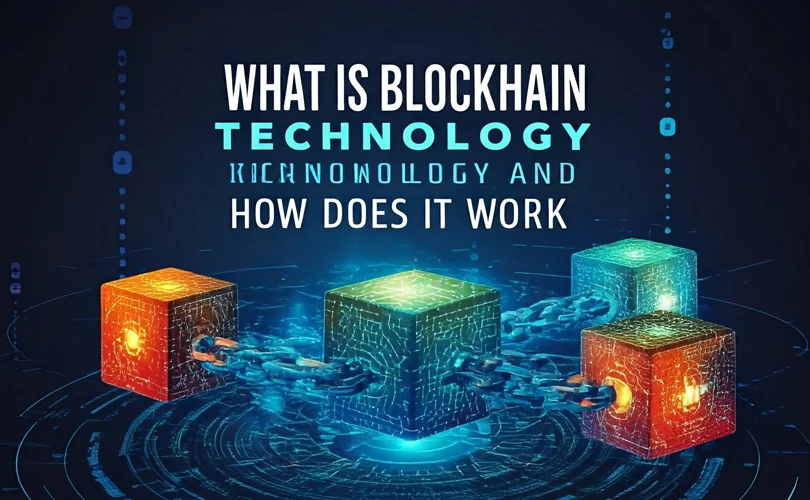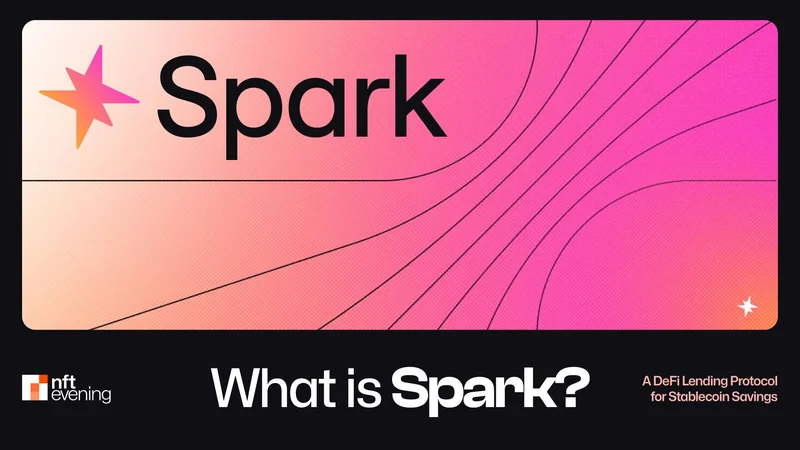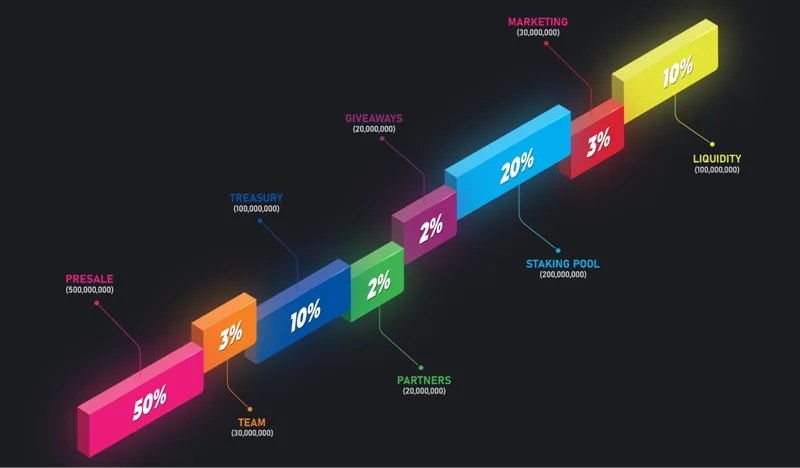Blockchain technology is a decentralized, distributed digital ledger system that records transactions or data in a secure, transparent, and immutable manner. The core concept of blockchain revolves around the collective validation and recording of data by multiple nodes (participants) in the network, rather than relying on a single central authority.
Watch videos to learn
Key Elements of Blockchain
Distributed Ledger: Blockchain consists of multiple nodes, each holding an identical copy of the ledger. When a transaction occurs, all nodes validate and update their copy of the ledger. This ensures that any data change must achieve consensus across the network, preventing single-point failures or data tampering.
Decentralization: Unlike traditional centralized systems (e.g., banks, governments), blockchain has no central controller. Anyone participating in the network can serve as a node, contributing to the system's security and operation.
Consensus Mechanism: Blockchain uses consensus algorithms to ensure that all nodes in the network agree on the validity of transactions. Common consensus mechanisms include Proof of Work (PoW) and Proof of Stake (PoS), ensuring only legitimate transactions are added to the blockchain.
Immutability: Once information is written to the blockchain, it is nearly impossible to alter. This is because each "block" is cryptographically linked to the previous one, forming a chain. Tampering with a single block would disrupt the entire chain, and any change would require the approval of the majority of the network.
Transparency and Traceability: Transactions on a blockchain are public, and each transaction can be traced back to its origin. This transparency builds trust in the system and is useful in areas such as supply chain management and finance.

How Blockchain Works
Blockchain stores data in "blocks," with each block containing transaction information and a hash value (used to identify and link the previous block). When new transactions occur, they are bundled into a block and validated through a consensus mechanism. Once validated, the block is added to the chain.
Applications of Blockchain
Although blockchain was originally designed for Bitcoin, its applications now span beyond cryptocurrencies into various industries:
- Finance: Blockchain improves the efficiency and security of cross-border payments, settlements, and clearances.
- Supply Chain Management: Blockchain can track products throughout their journey from manufacturing to sale, ensuring transparency and authenticity.
- Smart Contracts: Automated contracts on blockchain can execute agreements once certain conditions are met.
- Digital Identity Verification: Blockchain enables decentralized identity systems, reducing the risk of identity theft and fraud.
- Healthcare: Patient records can be securely and privately stored and shared through blockchain technology.
Why is Blockchain Popular?
- Security: Blockchain significantly enhances data security through cryptography and distributed architecture.
- Trust: Its decentralized and transparent nature fosters trust in the system, removing the need for intermediaries.
- Efficiency: Blockchain eliminates intermediaries, reducing costs and speeding up transaction processing.
Disadvantages of Blockchain
Scalability Issues:
- Low Throughput: Blockchain systems, especially Bitcoin and Ethereum, process transactions at a slower rate compared to traditional payment systems. For instance, the Bitcoin network can only handle around 7 transactions per second, whereas traditional systems like Visa can process thousands per second.
- High Transaction Costs: When the network is congested, transaction fees can increase significantly. On the Ethereum network, users often face high "Gas" fees during periods of high demand.
High Energy Consumption:
Many blockchains, such as Bitcoin, use the Proof of Work (PoW) consensus mechanism, which requires substantial computational power and energy to validate transactions. This results in high carbon emissions, especially as the network grows.
Regulatory Issues:
Due to blockchain's decentralized and cross-border nature, it faces diverse legal and regulatory challenges worldwide. For instance, cryptocurrencies are strictly regulated or even banned in some countries, which could hinder the widespread adoption of blockchain technology.
Privacy Concerns:
Although blockchain transactions are transparent, this also means that if identity information is linked to a wallet address, an individual's transaction history could be publicly traceable. Privacy protection remains an ongoing challenge.
Governance Challenges:
Blockchain's decentralized nature makes it difficult to implement unified upgrades or fixes. Disagreements can sometimes lead to hard forks, as seen with the split between Bitcoin and Bitcoin Cash.
How Does Blockchain Ensure Immutability?
Blockchain's immutability stems from its structure and consensus mechanisms. It employs a series of technical measures to ensure that once data is written to the blockchain, it cannot be easily altered.
Chain Structure:
Blockchain is composed of interconnected "blocks," with each block containing the hash value (a unique identifier generated by a cryptographic algorithm) of the previous block. This means that to change data in one block, all subsequent blocks would also need to be changed. This chain structure makes altering data extremely costly.
Consensus Mechanism:
Blockchain employs consensus mechanisms like Proof of Work (PoW) and Proof of Stake (PoS) to ensure that only legitimate transactions are added to the blockchain. To tamper with data, an attacker would need to control more than 50% of the network's computational power or stake (known as a 51% attack), which is nearly impossible in most public blockchain networks.
Cryptographic Hashing:
Each block’s content is processed using a cryptographic hash function to generate a unique hash value. Any change to the block’s content, even a single character, would result in a completely different hash. This mechanism ensures data integrity, as even the smallest alteration would be immediately noticeable.
Is Blockchain Security Reliable?
Overall, blockchain technology is considered secure, especially large-scale blockchains like Bitcoin and Ethereum. However, there are potential challenges, such as 51% attacks, smart contract vulnerabilities, and private key management issues. The core security of blockchain is derived from decentralization, cryptography, and consensus mechanisms, but mistakes in project design or user behavior can still introduce risks.
Potential Security Risks
- 51% Attack: If an entity controls the majority of the network's computational power, they could potentially tamper with the data.
- Smart Contract Vulnerabilities: Errors in smart contract code can lead to exploits, allowing attackers to steal funds.
- Private Key Exposure: If a private key is lost or compromised, the associated assets are irrecoverable.
- Centralization Risk: Some blockchain projects are partially centralized, which could make them vulnerable to attacks.
- Quantum Computing Threat: In the future, quantum computing might be able to break current cryptographic algorithms, posing a risk to blockchain security.
Case Studies
- Bitcoin: For over 15 years, Bitcoin has successfully resisted major attacks, proving its robust security.
- Ethereum: While some DeFi projects built on Ethereum have experienced security breaches, the overall Ethereum network remains stable.
Examples of Blockchain Applications
Bitcoin
Overview: Bitcoin, the first cryptocurrency to utilize blockchain technology, was created by the pseudonymous figure Satoshi Nakamoto in 2009. It aims to function as a decentralized digital currency, allowing people to transact directly without intermediaries like banks.
Features:
Bitcoin uses a Proof of Work (PoW) consensus mechanism, where miners solve complex mathematical problems to validate transactions and add them to the blockchain.
All transaction records are public, transparent, and immutable.
Example: In traditional bank transfers, the bank acts as the centralized verifier. However, in Bitcoin, the network’s miners collectively verify transactions, making the process decentralized and resistant to tampering.
Ethereum
Overview: Ethereum is a decentralized platform that allows developers to build and deploy smart contracts and decentralized applications (dApps) on its blockchain. It's more than just a cryptocurrency—it’s a platform for complex financial operations, games, voting, and more.
Features:
Ethereum supports smart contracts—code that automatically executes agreements when certain conditions are met.
Ether (ETH) is Ethereum’s native cryptocurrency, and users pay “Gas” fees to execute smart contracts or send transactions.
Example: If you're renting a property, you can set up a smart contract on Ethereum. Once you pay the rent, the contract automatically notifies the landlord and completes the agreement without intermediaries, ensuring a secure and transparent process.
Hyperledger
Overview: Hyperledger is an enterprise-focused blockchain project led by the Linux Foundation. Unlike public blockchains like Bitcoin and Ethereum, Hyperledger focuses on permissioned blockchains, where only authorized users can participate.
Features:
Ideal for industries like supply chain and banking, it allows businesses to share and verify data while maintaining a level of privacy and control.
Hyperledger’s modular architecture enables customization of consensus mechanisms and other features to suit specific enterprise needs.
Example: If you're a customer of a large logistics company, Hyperledger can track and verify the entire shipping process while ensuring data integrity and transparency, all while keeping sensitive details private from unrelated parties.
Ripple
Overview: Ripple is a blockchain platform focusing on cross-border payments, designed to make fund transfers between financial institutions faster, cheaper, and more efficient. Ripple aims to replace existing systems like SWIFT for international payments.
Features:
Ripple uses its cryptocurrency XRP as a bridge currency, facilitating easy transfers between different fiat currencies.
It uses a consensus algorithm, not PoW, enabling quicker transaction processing.
Example: Traditional international remittances may take days and incur high fees. With Ripple, banks can complete cross-border transfers in seconds with lower fees.
VeChain
Overview: VeChain is a blockchain platform focused on supply chain management. It enhances traceability, transparency, and product verification, helping businesses streamline their supply chain processes.
Features:
VeChain uses blockchain to track the production, transportation, and sales process of products, ensuring that data is reliable and tamper-proof.
Consumers can scan blockchain labels on products to verify authenticity and trace production information, preventing counterfeit goods.
Example: If you purchase a bottle of wine, scanning the label allows you to view its entire supply chain, from the vineyard to your hands, ensuring authenticity and proper sourcing.
Chainlink (Oracle)
Overview: Chainlink is a decentralized "oracle" network designed to bring external data (like weather, stock prices, etc.) into blockchain platforms, as smart contracts can only access on-chain data.
Features:
It provides external data through multiple nodes, ensuring data accuracy and reliability while preventing single points of failure.
Chainlink is widely used in DeFi (Decentralized Finance) for price feeds, insurance, and more.
Example: Suppose you have a smart contract for weather insurance that automatically pays farmers if the temperature drops below a certain level. Since blockchains cannot directly access weather data, Chainlink oracles pull weather information from multiple sources and provide it to the smart contract to trigger the payment.
FAQ
Q: How does blockchain ensure the security of my data?
A: Ordinary users may worry about whether their data can be leaked or tampered with in a decentralized system, especially concerning transaction and personal information management.
Q: Does using blockchain involve complex technical operations?
A: Many people feel uneasy about the complexity of blockchain technology, fearing that they may need specialized knowledge to participate, particularly when it comes to cryptocurrency transactions or using smart contracts.
Q: Why are blockchain transaction speeds slower than traditional payment systems?
A: Users might wonder why blockchain transactions (like those on Bitcoin or Ethereum) can take minutes or longer to confirm, while traditional payment systems can complete transactions almost instantly.
Q: Does the energy consumption of blockchain have a negative impact on the environment?
A: As concerns about the energy consumption of blockchain networks like Bitcoin gain attention, ordinary people may question whether the large-scale application of blockchain technology is environmentally friendly, especially in the context of global climate change.
Q: What practical benefits can blockchain technology bring to everyday life?
A: Ordinary people may be curious about whether blockchain technology can provide real convenience in daily life beyond cryptocurrencies, such as applications in shopping, healthcare, and education.
Related Articles

What is SparkLend? A Beginner-to-Advanced Guide to Decentralized Lending Made Easy
SparkLend is a decentralized, non-custodial liquidity market protocol built on the Ethereum blockchain. Simply put, it functions like a bank without intermediaries, allowing users to borrow and lend d
June 26, 2025
What is sUSDS? How Do I Acquire sUSDS?
This guide will walk you through Sky Savings’ sUSDS and sUSDC—your gateway to earning yield with stablecoins while keeping your funds secure.Sky Savings: Your Journey to Stablecoin Yields Begins HereW
June 26, 2025
What is SparkLend? A Complete Guide from Beginner to Pro
SparkLend is a decentralized, non-custodial liquidity market protocol that allows users to participate as lenders or borrowers. Lenders provide liquidity to earn passive income, while borrowers can ta
June 24, 2025
What Exactly Does Spark Protocol Do? A Complete Guide
This guide will walk you through Spark Protocol — an innovative platform designed to tackle the long-standing issue of fragmented liquidity in the DeFi space. You'll learn how to earn yield, borrow as
June 24, 2025
RXS Token Trading Guide: From Presale to Uniswap – A Complete Walkthrough
This guide will walk you through the trading process of the RXS Token, from the restrictions during the presale phase to free trading on Uniswap, helping you trade securely and efficiently.1. Introduc
June 24, 2025
